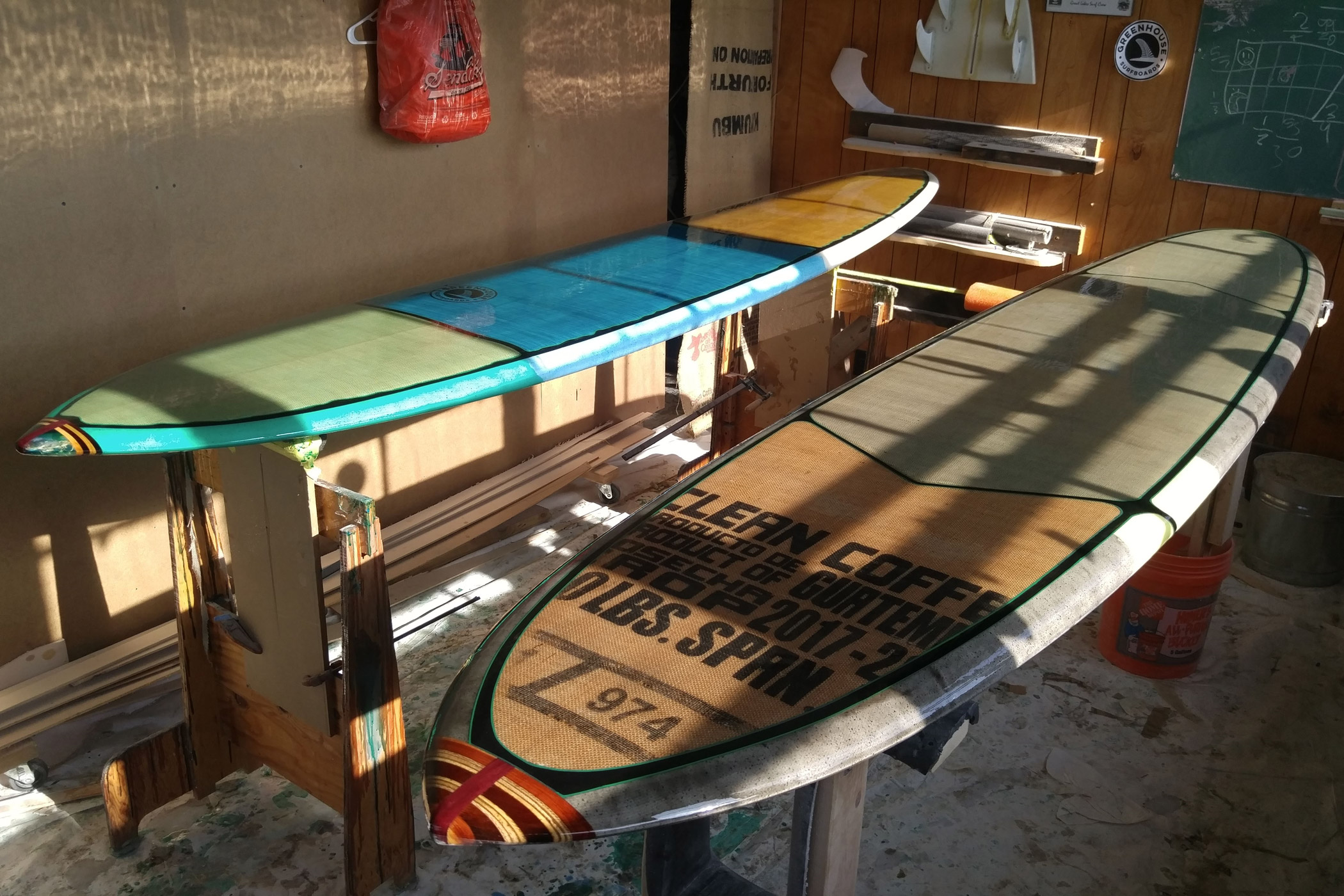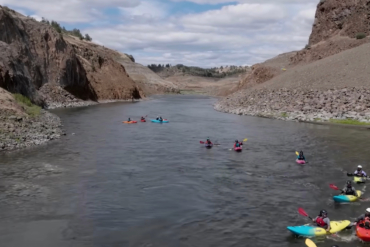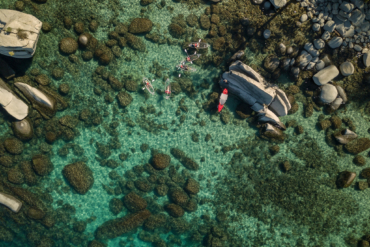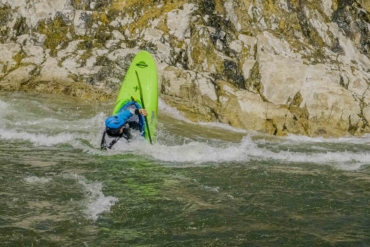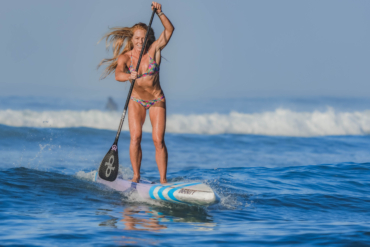Ken Cole, a Milwaukee-based psychologist and surfer, is working with engineering professors to create the world’s first surfboard made of leaves. And he’s hoping that by this summer, he’ll be riding the cold waves of Lake Michigan on his bio-based board.
Cole’s journey to shaping surfboards with sustainable, nontoxic materials began in 2018. After years of feeling that the board beneath his feet was interrupting the unique connection with nature that surfing provides, he decided to design his own.
Using his garage as a workspace, he started handcrafting boards with sustainability in mind, using as many organic and eco-friendly materials in their construction as possible. And Greenhouse Surfboards was born. The brand’s been making custom surfboards ever since.
But this is the first time that Cole has used leaves as the primary material for one of his surfboards. And he’s got high hopes for the end result.
Greenhouse Surfboards: How They’re Made
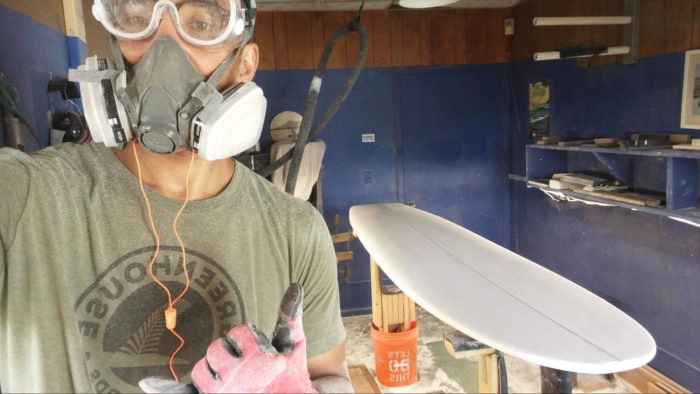
Commercial factories crank out surfboards in just minutes. In Cole’s workshop at Greenhouse Surfboards, every one he makes takes roughly 20 hours. He sculpts his creations using jute, basalt, hemp, bioresin, and repurposed wood, instead of fiberglass or carbon, which is used on most standard surfboards.
For the artwork, Cole carefully lays out pieces of jute and strips of fabric from coffee bags given to him by Al Liu at Colectivo Coffee Roasters. The look is instantly recognizable and gives his boards a classic, organic kind of feel.
But the problem he’s never been able to work around is at the core of his craft. Literally, the core of surfboards is made from polyurethane (PU) foam, and his boards are no different. Despite all the organic materials Cole uses in the outer layers of the boards, PU foam still accounts for 97% of their mass.
“I recognized the limitations in sustainability when you have a surfboard with a foam core,” Cole said. “And we’re at a place where the status quo won’t work when it comes to the environment. We just can’t continue to rely on petroleum-based products.”
So Cole continued searching. He wanted an answer — a solution that allow him to replace PU foam with something organic. It would have to be lightweight. But it would also need to hold stability. And it would have to be extremely buoyant.
The board maker considered a lot of alternatives. But then one night, he stumbled upon a garbage can filled with bio-based disposable dinner plates and his world changed.
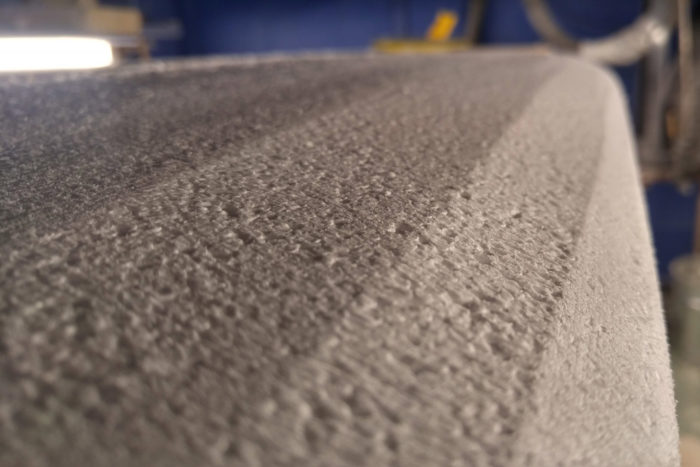
Leaving PU Behind
Cole was visiting a friend who founded the eco-dishware company Patra, a brand that makes dinnerware out of palm leaves. And when Cole noticed some discarded Patra plates in the trash, he started rifling through them. He was blown away by the natural material’s strength and versatility.
He wondered whether it could work to make surfboards out of it as well.
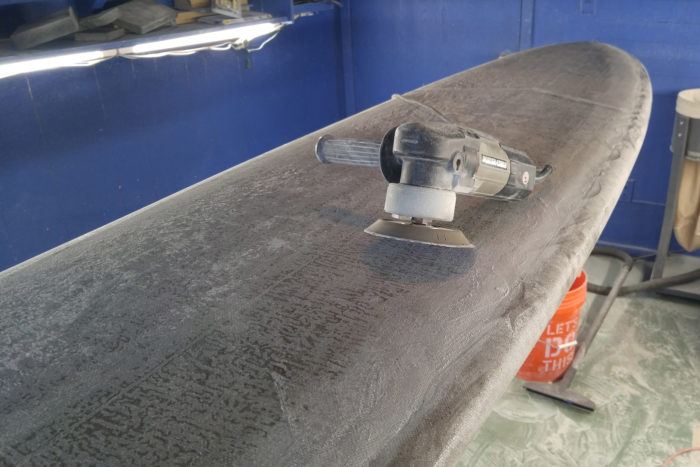
Cole then reached out to professors at the Milwaukee School of Engineering (MSOE) who specialized in composite materials. They helped him gauge the potential for using palm leaves in surfboards.
Together they looked at research and data on the characteristics of other leaf-based composites, such as jute and hemp. Several case-study objects were created from the palm leaf-based composite, including the world’s first “skateboard made of leaves.” And it worked amazingly — the deck was sturdy, smooth-rolling proof of the natural material’s structural capabilities.
Cole was gaining confidence that palm leaves would be able to sustain the typical use of a surfboard.

The Next Evolution of Leaf Boards
The mission to build a better board gained even more momentum when Cole connected with Ted Burdett and the Great Lakes Surf Craft Project (GLSCP).
“Our goal is to celebrate the creative work of surf craft shapers who focus on building craft for the Great Lakes,” said Burdett, a professor at the University of Illinois Chicago School of Industrial Design. “Ken Cole was one of the shapers we were all aware of before the project began, having seen his beautiful boards on Instagram … Ken’s work with locally sourced, alternative materials seemed to align with our thesis.”
The GLSCP team has been providing assistance in the technical facets of construction and computer-aided design and computer-aided manufacturing technology. Burdett is currently building a digital model of the palm leaf board using these tools.
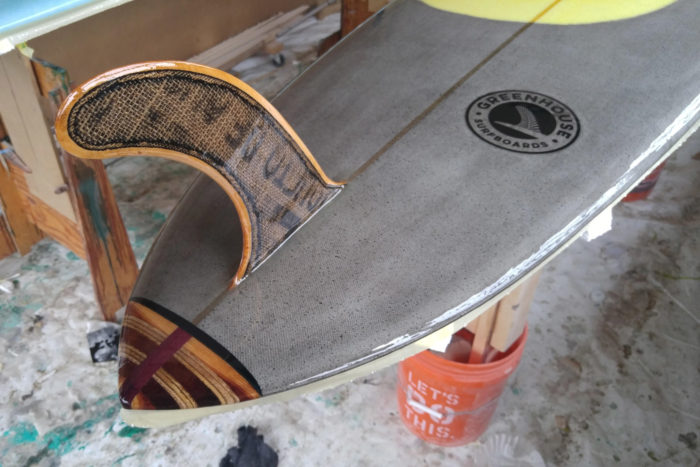
Burdett explains how the natural composite can be formed into a flat material — or cold-molded into forms with compound curvature. Cole’s palm leaf surfboard will use both.
Paired with a bio-based thermoset resin, the result will be a strong and beautifully engineered material.
“We’re kind of sharing our talents,” Cole said. “Mine is the vision, the idea of the concept, the process. Working with MSOE and now Ted Burdett, it’s a unique collaboration between myself and two institutions.”
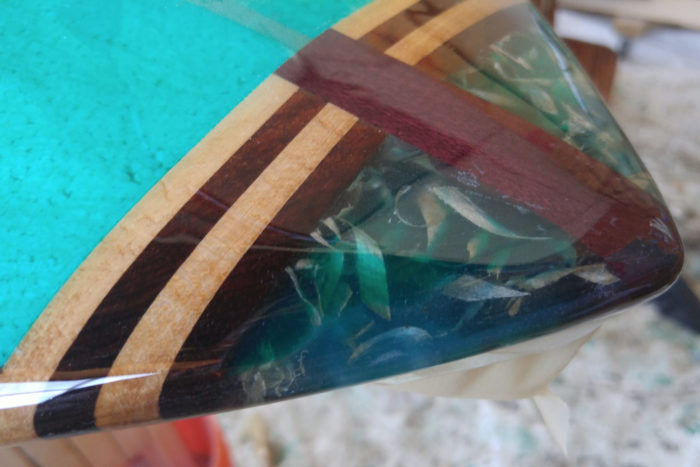
Design
As for the design of the surfboard-in-progress? Burdett is modeling it after one of Cole’s original Greenhouse Surfboards creations: a 9-foot-6-inch single-fin pig longboard.
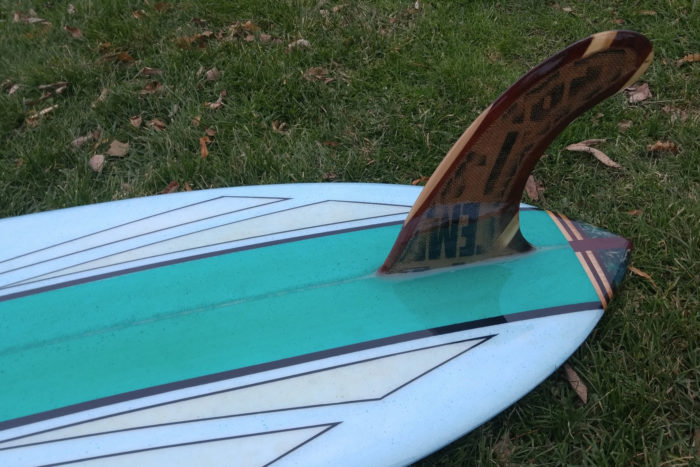
“Using [Ken Cole’s] form, I’m building a digital model in Fusion 360 using a board modeling strategy I developed through the pandemic,” Burdett explains. “While the internal structure of the surfboard is similar to designs of the late 1920s, the rail-building method is somewhat new. Inspired by war-time wooden boat construction through a method called ‘cold molding,’ the rails will be molded into a hollow shape — yielding a ton of strength with less weight.”
Palm Leaf Board: Available in the Future (Maybe)
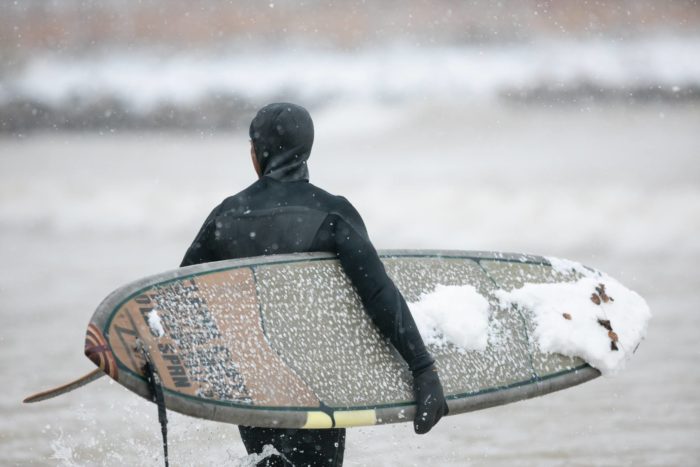
For those wondering when they’ll be able to get their hands (and feet) on an all-natural surfboard, time will tell. The scalability of this board and the materials it’s made out of remains to be seen. But Cole hopes to be riding his prototype by this coming summer.
Until then, this concept will continue to inspire people. It’s illuminating the eco-potential of new materials and sparking more ideas in sustainable design and manufacturing.
Engineers like Burdett are interested, not only in how palm leaves perform as a surfboard but also in how they might work for other applications as well.
“If [this material] can be formed into a strong yet light craft that can glide through waves, it can easily carry the weight of a person as furniture,” Burdett says. “If it can endure the frigid waters of the Great Lakes during winter sessions, clearly it can become a durable component in objects for transportation.”
Cole, too, is optimistic about the future uses of his patented eco-friendly material.
“A surfboard is just one thing,” he said. “Every little effort, every little shift in a different direction, keeps us here on this planet a little bit longer.”
